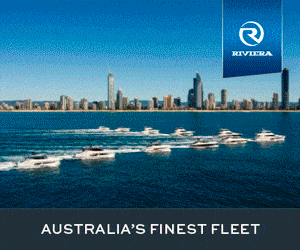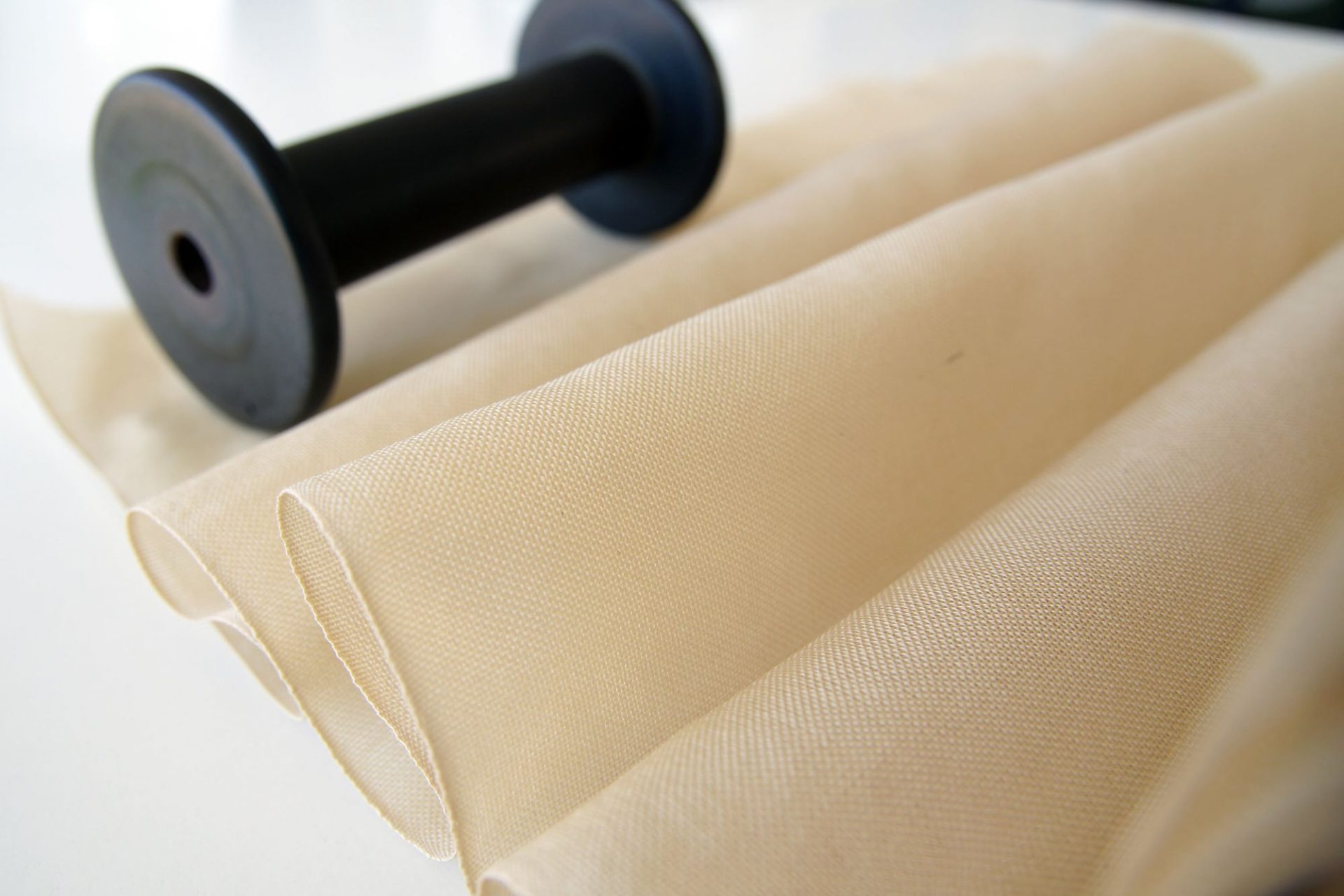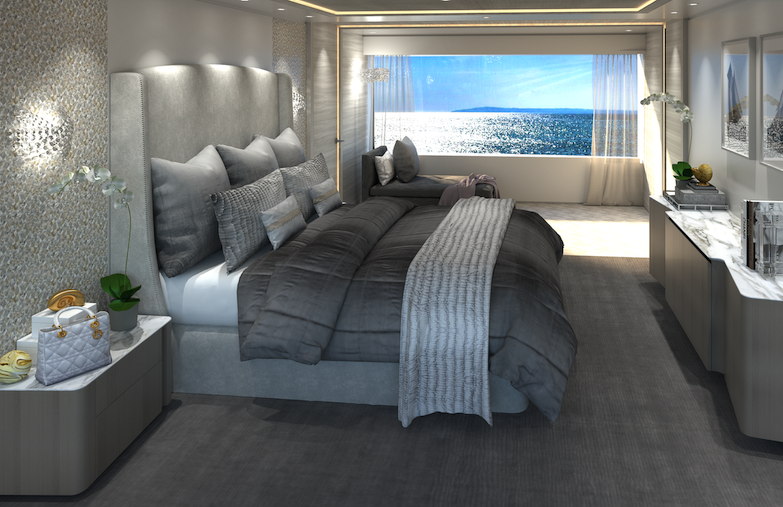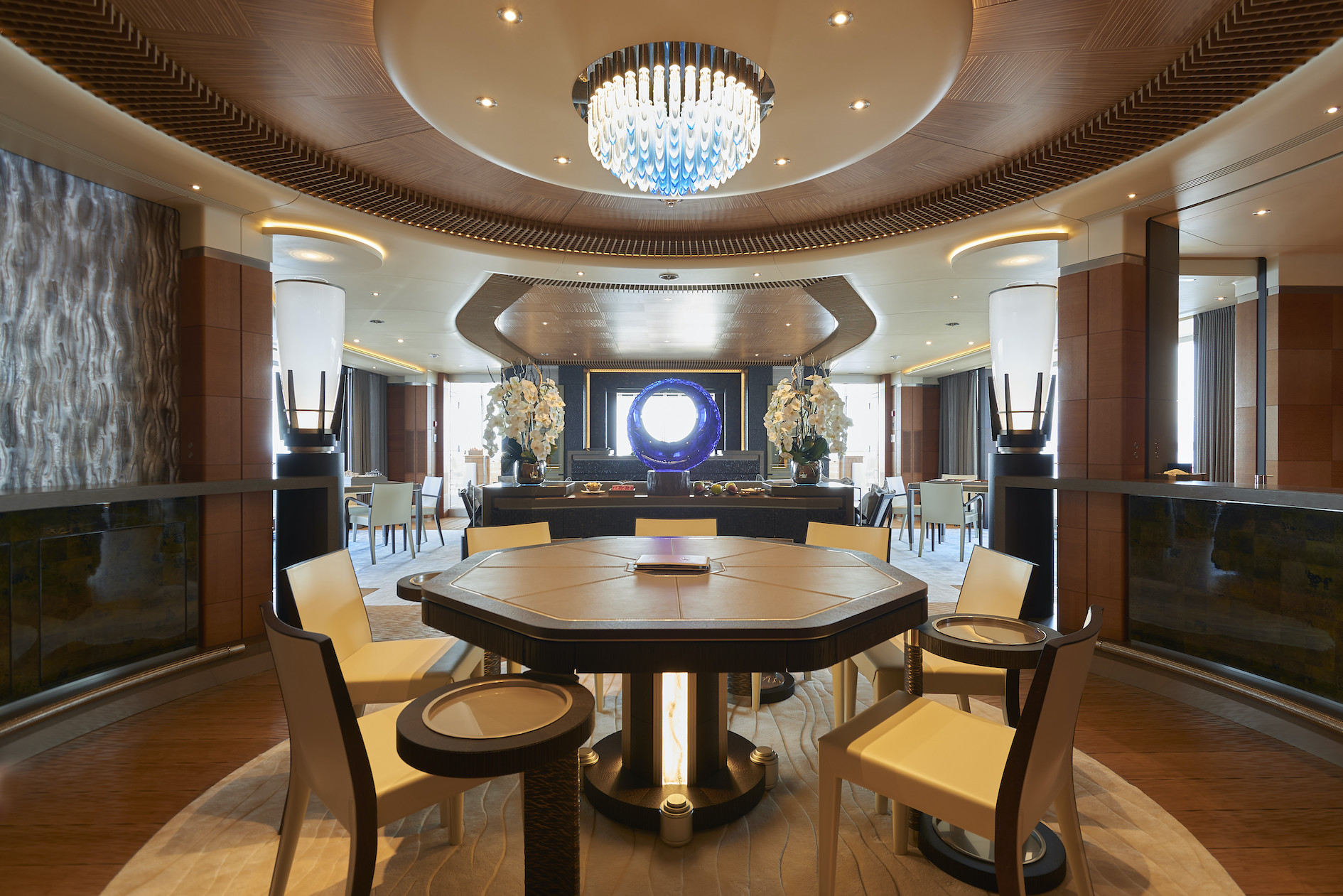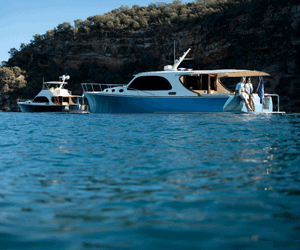Great aspirations
Balancing constraints of budget and a collective conscience to reduce their impact on the planet, industry-leading designers are inspiring yacht owners to embrace sustainable alternatives in all facets of interior construction and design.
Written by Jeni Bone
03 April 2020
According to the Australian Design Centre (ADC), an organisation charged with nurturing the country’s design culture, “There is a fundamental problem with the creation and consumption of designed things – it is unsustainable.”
But the appetite for beautiful things cannot be doused by fears of climate change or other catastrophes. To paraphrase the American poet Emily Dickinson, “The heart wants what the heart wants.” And if owners want yachts that are to live up to the lofty goals of sustainability, then fabrication, construction, production and selection must all change.
Though often equated with green credentials alone, sustainable design encompasses the entire design process and beyond. For designers the world over, the practice of sustainability should encompass the materials they use, the way in which those materials are manufactured, the processes that are employed during production, the conditions of the workers who are producing their products, and the lifespan of the product.
Based in Western Australia and Monaco with an international clientele, the highly awarded yacht and interior designer Sam Sorgiovanni has observed a rise in client awareness of sustainable design. “Society is becoming increasingly aware of the importance of environmentally responsible yacht building and interior design and, as a result, more and more clients seek to incorporate sustainability principles in their interiors.
“As interior designers, we have a tremendous impact on the sustainability of an environment because we are the ones sourcing the materials and products that will be used onboard.”
It’s a trend that Sarah Egan, founder of Boat Style Design, has also noticed. With experience designing and refitting some of the world’s premium production and custom-designed vessels she says, “There’s no question that in recent years, there’s been far greater interest in building and refitting yachts in a more sustainable way.”
Egan has recently used a number of Cradle to Cradle® (C2C) products for linings, upholstery, flooring and bedding. She explains, “The C2C certification program is based upon an economic, industrial and social framework that seeks to create systems that are not only efficient, but also essentially waste-free.”
Of her work she says, “Whenever possible, I take a holistic approach to reducing, reusing and recycling the resources, products and waste generated by a project. As a designer, part of my role is to influence good choices.”
Going deeper
Angela Burlizza, co-founder of Analu, which specialises in Italian decor for homes and yachts, says the consideration of sustainability in product selection is equally as important as aesthetic concerns. “We take into account the impact on the environment and the overall wellbeing of people; we look at the composition of products, their origin and their production process. Sourcing eco-friendly, naturals fibres (such as cottons, linens, wool, cashmere and silk) is the top priority in our business,” she continues.
“They need to be ethically grown and harvested as well as manufactured in an environmentally and socially responsible way. They must meet the GOTS (Global Organic Textile Standard) and ideally be certified by associations that ensure the entire production process is followed all the way through to the packaging and labelling of the products.
“We visit our suppliers, frequently artisans, and their manufacturing facilities, inspecting firsthand the entire production process.”
Sam Sorgiovanni agrees that certification is essential when sourcing materials and products with the lowest environmental impact. As he explains, “Organic materials such as timber, natural stone and marble seem the obvious choice, but we mustn’t forget that natural resources need to be treated responsibly too.
“We choose materials that are quickly renewable, such as fast-growing bamboo, and are extracted in an environmentally responsible way. There are labels, standards and certifications that give credible information about the products’ origins and help us identify eco-friendly products.
“The fast-growing silky oak and bamboo we used onboard M/Y Barbara were harvested sustainably. Investment in durable, sturdy and low maintenance substrates – from flooring to cabinetry and decoration – can mean fewer harmful cleaning products too.”
Unique finishes that have become hallmarks of Sorgiovanni’s innovative design include sea urchin frames around artwork and mirrors, duck eggshell inlay on recliner seats in the yacht’s cinema, water buffalo horn adorning bulkheads, cabinet fronts and heavy doors that were designed to eliminate noise transfer.
Sorgiovanni quickly explains, “Sea urchins are endemic to tropical waters, and they have thick spines that form an interesting pattern when they are cross-cut.”
He continues, “Water buffalos are important to rice farmers in Asia until they are no longer able to work – their deeply ridged horns can be as long as 1.5 metres.”
A natural choice
Innovative materials with beneficial properties and the all-important certification have become more accessible and acceptable, according to Sarah Egan, who has been a longstanding advocate of organic cotton and flax linen sheets and bedding.
“In recent years, two new botanic fibres have rocketed in popularity: organic bamboo lyocell and Tencel® made from the pulp of Eucalyptus trees. These new-age fibres are silky smooth, and their amazing high-performance qualities have made them a standout choice for bedding since they’re moisture wicking, hypoallergenic and antibacterial.
“Another favourite is the high-performance textile Xorel, which is sourced from the sugarcane plant rather than fossil fuels.”
(Not only are they non-renewable resources, petrochemicals (chemicals obtained from petroleum and natural gas) remain in the ecosystem after end of use and, like microplastics, are ingested by fish and eventually humans.)
A new breed of protein-based fibres is ahimsa, or peace silk, which employs a method of non-violent silk breeding and harvesting. “Wild silk moths are bred, rather than the domestic variety,” explains Egan. “This allows the completion of the metamorphosis of the silkworm to its moth stage, whereas most silk harvesting requires the silkworms to be killed in their cocoon stage.”
Soft and sustainable are the virtues clients at Analu treasure. Burlizza says, “Products that are in direct contact with the skin and that impact on the quality of our sleep and overall wellbeing must be produced sustainably in natural fibres.”
More challenging to source, and produce, are sufficiently sustainable textiles for outdoor use. “It generally has to be synthetic as any natural fibre would eventually break down under the sun and heat,” she adds.
But synthetic needn’t mean sinful. Designers can do their part to help reduce the depletion of natural resources and divert waste from landfills by opting for synthetic materials made from recycled waste.
It’s a brave new world when it comes to repurposing and recycling materials that would once have been considered waste. Emerging brands and businesses are pushing the boundaries and factoring in sustainable processes at every stage of production.
On a current project, Egan has specified an ultra-compact hard surface made entirely from recycled materials. “Its performance compared to natural stone is simply unparalleled,” she states.
Traditional manufacturers are offering innovative options as well. “The Renaissance outdoor fabric collection by Sunbrella gives fabric cut-offs new life by creating a fibre composed of at least 50 percent recycled material.
“And Swedish company Bolon specialises in flooring products that contain up to 33 percent recycled materials. They are manufactured with zero-percent waste in a production site that runs on 100-percent renewable energy from either water or windmills and local ground water cooling.”
Sorgiovanni affirms this move toward renewal and recycling. “Most of the fabrics we use onboard for interiors are the product of recycled fibres,” he says. “The finish, quality and colours choices are incredible and very inspiring. In case of a refit, all used materials can easily be recycled too.”
Yet the consideration of interior design stretches beyond the decor to the structural parameters as well, which can influence the vessel’s energy consumption. “Heating and lighting are major contributors to climate change,” says Sorgiovanni, citing UN Foundation data.
“It’s important that a yacht’s installed windows are of high quality and provide good insulation. Curtains, blinds and window coverings keep both the cold air and the sun’s heat out, helping to reduce the use of the yacht’s generators and engines.
“A lot can be done to save energy spent on lighting just by picking the right colours. Lighter colours reflect more light and using reflective surfaces increases the amount of light in a room by bouncing it around, decreasing dependency on artificial lighting.”
What cost?
Of course, while a sub-set of enlightened clients leads the charge toward sustainable yacht design and reducing their carbon hull-print, many will baulk at paying a premium for benefits that may seem somewhat ethereal and extraneous to the bottom line on a build or refit works. Considering the environment, society, and the future of our shared planet may take a back seat to the realities of budget.
“Responsible manufacturing doesn’t come cheap,” Sorgiovanni asserts. “Obtaining environmental and social certifications is a resource-intensive process, as is running a supply chain that follows industry guidelines on sustainability, fair labour practices, and reporting.”
Burlizza agrees. “In terms of textiles, a sustainable item is produced following strict regulations and processes affecting every step – from sourcing materials to cultivation, harvesting, dying and disposing of any production materials. This more costly process is reflected in the overall cost of the product.
“Those attributes are important to the majority of our clients who are very attentive to the source and composition of the product, and request items free of animal cruelty and produced with non-toxic dyes and components.
“Our clients are fully aware of our strong values, and our commitment to supporting artisans and the origin of the products. There is a high level of trust between our clients and our team.”
It’s just a matter of designers and their team prioritising sustainability and making the effort to procure and verify products, pitch them to their clients, and persuade them of the benefits. Something that is not always easy, according to Egan.
“Specifying only eco-friendly finishes, fibres and fabrics certainly comes with unique challenges as product options can be limited and generally carry a higher price tag.
“That’s not easy to sell to clients but ultimately, the sustainable design agenda is worthwhile and must continue to be driven by designers, manufacturers and yacht owners who are conscious of doing what’s good for the planet.”
Sorgiovanni goes further, saying that “Making environmentally and socially responsible products the new normal for all consumers – not only in the yachting industry – should be a top priority for all companies.”



